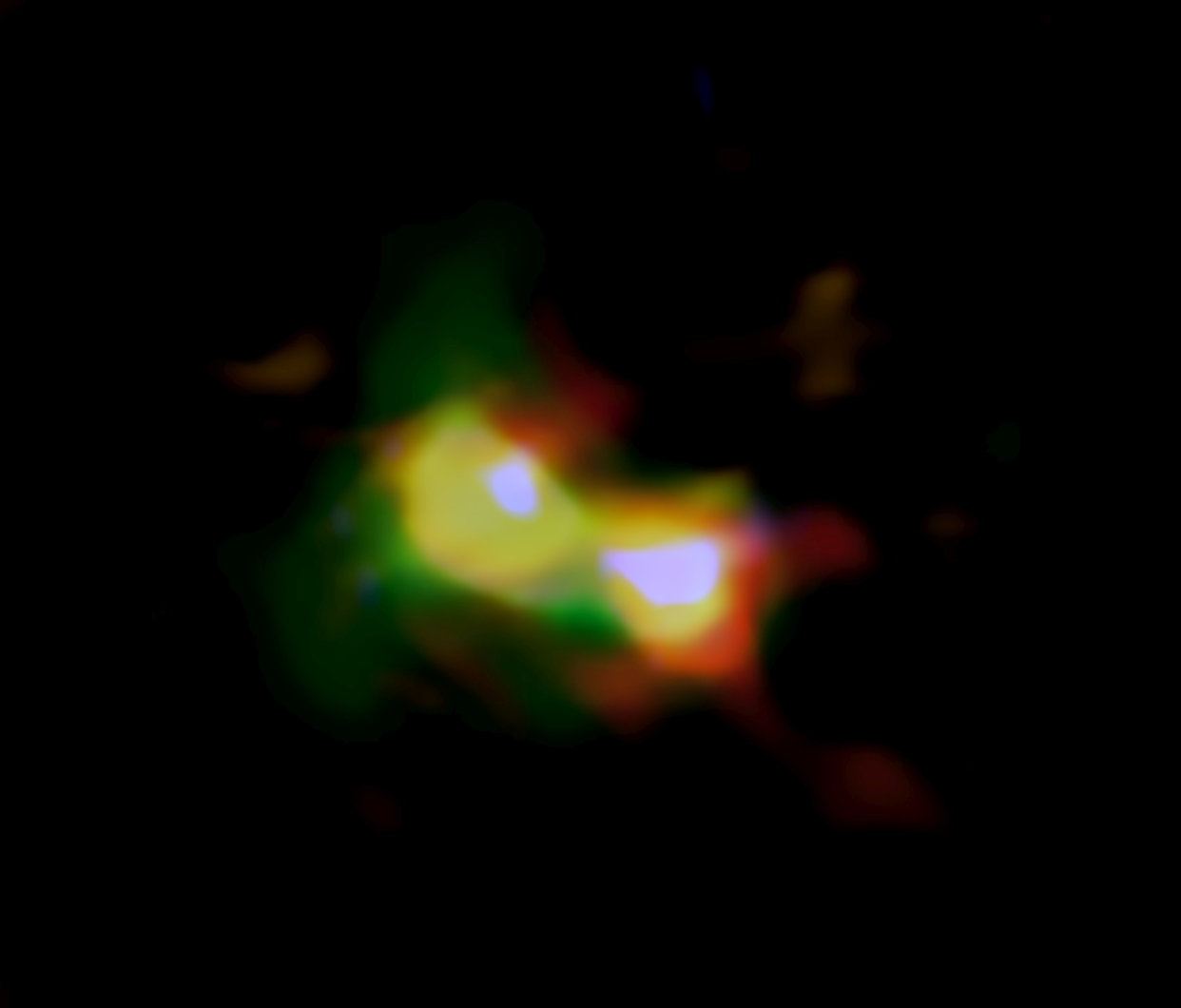Astronomers spot two galaxies colliding just after the Big Bang for first time

Astronomers have glimpsed two galaxies colliding 13 billion years ago - at the dawn of time, just a few hundred million years after the Big Bang.
Analysing signals using a huge telescope in Chile, the researchers believe that a distant object is in fact two galaxies, captured mid-collision, the earliest ever seen.
Researchers at Waseda University, Japan, used the ALMA Large Millimeter/submillimeter Array (ALMA) to observe B14-65666, an object located 13 billion light-years away in the constellation Sextans.
Because of its enormous distance from Earth, we see it as it was at the dawn of the universe.
The signals we receive from B14-65666 today had to travel for 13 billion years to reach us.
They show us the image of what the galaxy looked like 13 billion years ago, less than 1 billion years after the Big Bang.
Read more from Yahoo News UK:
Torrential rain and thunderstorms lash UK
Fifth suspected murder in six days as London violence continues
Jeremy Corbyn to back second referendum
The research team estimated that the total stellar mass of B14-65666 is less than 10% that of the Milky Way, meaning that it’s in its earliest phases of evolution. Despite its youth, B14-65666 is producing stars 100 times more actively than the Milky Way.
Such active star-formation rate is another signature of galactic mergers because the gas compression in colliding galaxies naturally leads to bursty star-formation.
Takuya Hashimoto said, ‘With rich data from ALMA and HST, combined with advanced data analysis, we could put the pieces together to show that B14-65666 is a pair of merging galaxies in the earliest era of the Universe.
‘Detection of radio waves from three components in such a distant object demonstrates ALMA’s high capability to investigate the distant Universe.’
Present galaxies like our Milky Way have experienced countless, often violent, mergers. Sometimes a more massive galaxy swallowed a smaller one.
In rare cases, galaxies with similar sizes merged to form a new, larger galaxy. Mergers are essential for galaxy evolution, attracting many astronomers eager to trace back them.

 Yahoo News
Yahoo News 

